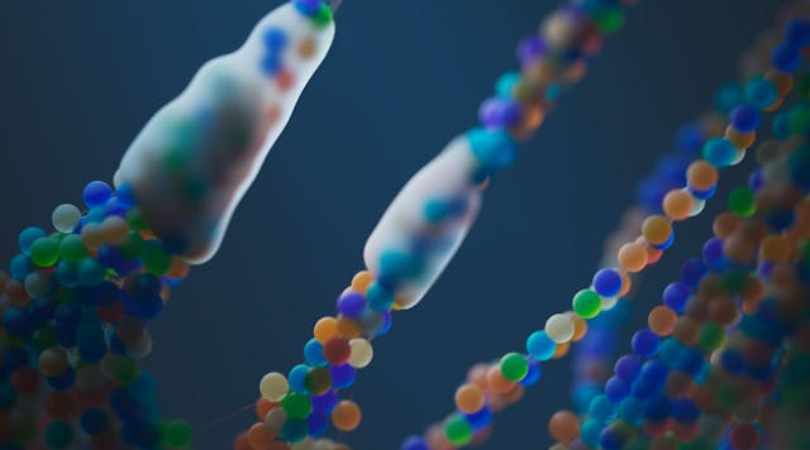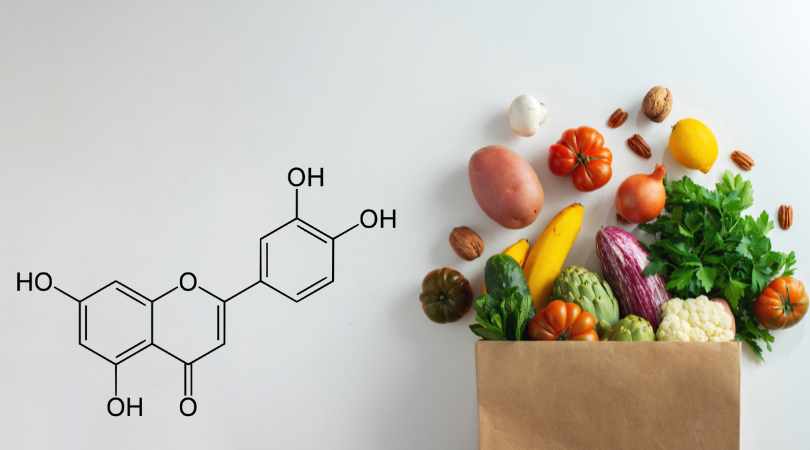Scientists have successfully restored the lost uricase enzyme, a key breakthrough in combating fructose-induced fat formation. This discovery offers new hope for preventing obesity and metabolic disorders by targeting how the body processes sugar and stores fat.
Limited Quantities Available! Order Today and Enjoy Free Shipping on Orders Over $100!
How to Stop Sugar Cravings Naturally: 10 Proven Strategies That Actually Work

Cutting sugar seems simple—until you try it. You tell yourself it’s just a matter of avoiding desserts or cutting back on soda, but the cravings don’t stop. Even when you cut sugar completely, you still feel tired, hungry, and stuck in a constant battle with your willpower.
Why is it so hard?
The answer lies in how sugar affects your metabolism. Only half of sugar is fuel (glucose). The other half is fructose—a survival mechanism that rewires your metabolism to conserve energy and store fat. Fructose slows cellular energy production, triggering cravings that push you to eat more. Even worse, cutting sugar doesn’t eliminate the problem entirely because your body makes fructose internally in response to certain stressors like dehydration and poor sleep.
This is why controlling sugar cravings requires more than just avoiding sweets. To break free, you need a strategy that tackles both sources of fructose—what you eat and what your body produces. The good news? There are proven techniques to reduce fructose exposure, restore cellular energy, and eliminate sugar cravings naturally.
Here’s a step-by-step guide with 10 actionable strategies that will help you take control of your sugar cravings once and for all.
✅ 1. Block Sugar at the Source: Inhibit Fructose Metabolism
Most people don’t realize that sugar cravings aren’t just about taste. They’re triggered by the cellular depletion caused by fructose metabolism. Fructose depletes ATP (cellular energy), leaving your cells starved for energy. This creates a vicious cycle—your body craves more sugar to replenish energy, but consuming it only prolongs the cycle.
The most effective way to stop this cycle is by blocking fructokinase—the enzyme that converts fructose into harmful byproducts that drain cellular energy. Supplements like Luteolin (such as Sugarshield) inhibit fructokinase and help prevent the energy loss that fuels cravings.
👉 Pro Tip: Since inhibiting fructokinase protects cellular energy without removing glucose, starting with a supplement like Sugarshield makes it easier to transition to a low-sugar diet without immediate withdrawal effects. Once your cells recover and energy stabilizes, dietary changes become easier and cravings diminish naturally.
💧 2. Stay Hydrated to Reduce False Hunger Signals and Fructose Production

Dehydration doesn’t just make you thirsty—it triggers fructose production as a survival mechanism. When the body senses fluid loss, it activates endogenous fructose synthesis to help retain water and conserve energy. This process can intensify sugar cravings.
To prevent this:
- Drink at least 2 liters of water daily.
- Add a pinch of sea salt or electrolytes to your water to maintain fluid balance.
- If cravings hit, drink a glass of water and wait 10–15 minutes to see if they subside.
Hydration not only reduces sugar cravings but also helps mitigate one of the key drivers of fructose production.
🍳 3. Prioritize Protein to Reduce Sugar Cravings
Protein reduces sugar cravings by providing a steady source of amino acids that stabilize blood sugar and increase satiety. It also triggers the release of peptide YY (PYY) and glucagon-like peptide-1 (GLP-1), hormones that signal fullness.
How much protein do you need?
- Aim for 0.8–1.2g of protein per pound of body weight to maintain muscle and stabilize blood sugar.
- Include high-quality proteins like eggs, meat, fish, or essential amino acid (EAA) supplements to curb sugar cravings naturally.
💤 4. Improve Sleep and Address Hypoxia to Lower Sugar Cravings
Poor sleep and low oxygen levels (hypoxia) increase fructose production as part of the body’s survival response. Sleep apnea, mouth breathing, and shallow breathing can trigger this process, leading to increased sugar cravings.
To optimize sleep and oxygenation:
- Maintain a consistent sleep schedule.
- Avoid blue light exposure 1-2 hours before bedtime.
- Practice nasal breathing during sleep and consider addressing potential sleep apnea.
Better sleep reduces the hormonal imbalances and fructose synthesis that amplify sugar cravings.
🍠 5. Eat Complex Carbohydrates Temporarily to Ease Withdrawal
When cutting sugar, you’re not just eliminating fructose—you’re reducing glucose as well. Since glucose is a primary fuel source, your body may panic and amplify sugar cravings in response.
To make the transition easier:
- Introduce complex carbs like sweet potatoes, quinoa, and legumes to provide slow-burning energy.
- Over time, gradually reduce carb intake as your body adapts to burning fat or ketones for fuel.
👉 Pro Tip: Consider using MCT oil to introduce ketones as an alternative energy source while transitioning away from sugar. Ketones bypass the sugar pathway and provide immediate cellular energy, reducing the feeling of depletion.
🥦 6. Support Gut Health to Reduce Sugar Dependency
An imbalance in gut bacteria can increase sugar cravings by promoting the growth of sugar-loving microbes. Poor gut health can also drive systemic inflammation, increasing stress and triggering endogenous fructose production.
To rebalance your microbiome:
- Increase fiber intake through vegetables and guar gum to feed beneficial bacteria.
- Incorporate fermented foods like kimchi, sauerkraut, and kefir.
- Consider a high-quality probiotic to replenish healthy gut flora.
🧘 7. Manage Stress to Stop Sugar-Driven Cortisol Surges

Chronic stress triggers cortisol release, which signals your body to produce more endogenous fructose through the polyol pathway—fueling sugar cravings.
To manage stress:
- Practice deep breathing or meditation to lower cortisol.
- Engage in physical activity or high-intensity interval training (HIIT) to clear stress hormones.
- Prioritize downtime and avoid over-scheduling to allow your body to reset.
🍭 8. Delay the Introduction of Sugar Substitutes Until Cravings Are Under Control
While alternative sweeteners like Allulose, monk fruit, and erythritol offer a low-calorie substitute for sugar, they can still trigger the brain’s response to sweetness—prolonging sugar cravings.
Allulose, however, is metabolically beneficial. It not only bypasses fructose metabolism but also increases GLP-1 production, enhancing satiety and supporting healthy blood sugar levels. But it’s best to introduce Allulose after sugar cravings have subsided to avoid prolonging the brain’s dependency on sweet flavors.
🥥 9. Incorporate MCT Oil for Quick Energy Without Sugar
When your cells are desperate for energy, sugar cravings become more intense. Providing an alternative energy source can short-circuit this process.
MCT oil (medium-chain triglycerides) rapidly converts to ketones, offering a direct energy source for the brain and muscles. It helps curb sugar cravings by providing a steady supply of energy without spiking insulin.
🔥 10. Gradually Reduce Carbs as Cravings Fade
Once your body adapts to a lower-sugar lifestyle, you’ll need fewer carbohydrates to maintain energy. Over time, reducing carbs can further stabilize blood sugar and retrain your body to burn fat as its primary fuel.
How to transition:
- Start by reducing refined carbs and added sugars.
- Slowly decrease complex carbs as energy stabilizes.
- Allow your body to adjust to burning fat and ketones for fuel.
🎯 Why Fructokinase Inhibitors Are the Game-Changer in Fighting Sugar Cravings
While dietary control is powerful, it often fails over the long term. Restrictive diets can create a poor relationship with food, where individuals become fearful of “falling off the wagon.” This cycle of restriction and relapse fuels feelings of failure, making sugar addiction even harder to break.
But now we know better - By targeting the root cause—fructose metabolism—fructokinase inhibitors offer a more sustainable solution. Inhibiting fructokinase protects cellular energy and prevents the depletion that drives cravings.
Why this changes everything:
✅ No sudden withdrawal effects from sugar.
✅ Easier transition into dietary changes.
✅ No fear of “falling off the wagon” because cravings naturally fade.
When you block fructose metabolism first, dietary changes become easy to adopt and maintain. You’re no longer fighting against your body’s biological signals—you're working with them. This shifts the focus from restriction and fear to freedom and long-term success.
📝 Final Thoughts: A Balanced Approach to Sugar Control
Breaking free from sugar cravings is challenging but achievable. A combination of inhibiting fructose metabolism, supporting cellular energy, and addressing lifestyle factors makes the process much smoother.
The ultimate goal? Reduce cellular exposure to fructose as much as possible—because even if you cut sugar, your body can still make it internally. By blocking fructokinase, you remove the stressor at its source, supercharging any dietary approach you choose.
Take the first step today by incorporating these strategies and giving your body the tools it needs to break the sugar cycle—naturally.
Disclaimer: The information in this blog reflects personal opinions, experiences, and emerging research. It is not intended as medical or professional advice and should not replace consultation with qualified professionals. The accuracy of this content is not guaranteed. Always seek guidance from a licensed expert before making any health-related decisions.


Chris | 🔬 Founder of LIV3 Health
⚡ A keen researcher dedicated to uncovering the root causes of metabolic dysfunction, the key driver of chronic conditions behind 70% of global deaths. His findings led to science-backed, natural solutions designed to inhibit fructose metabolism.
📢 Follow me on Reddit for insights on metabolic health and the future of wellness! -






